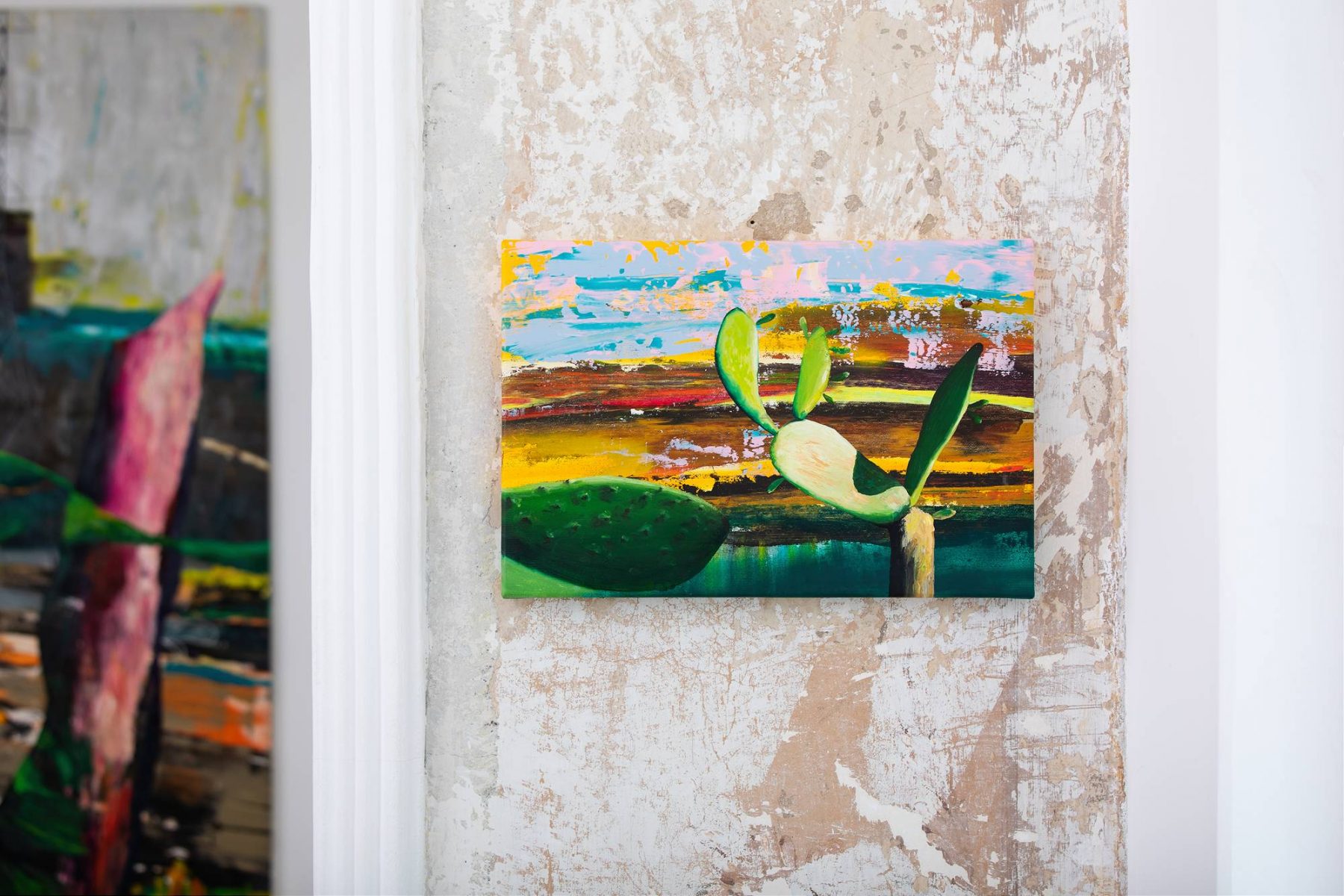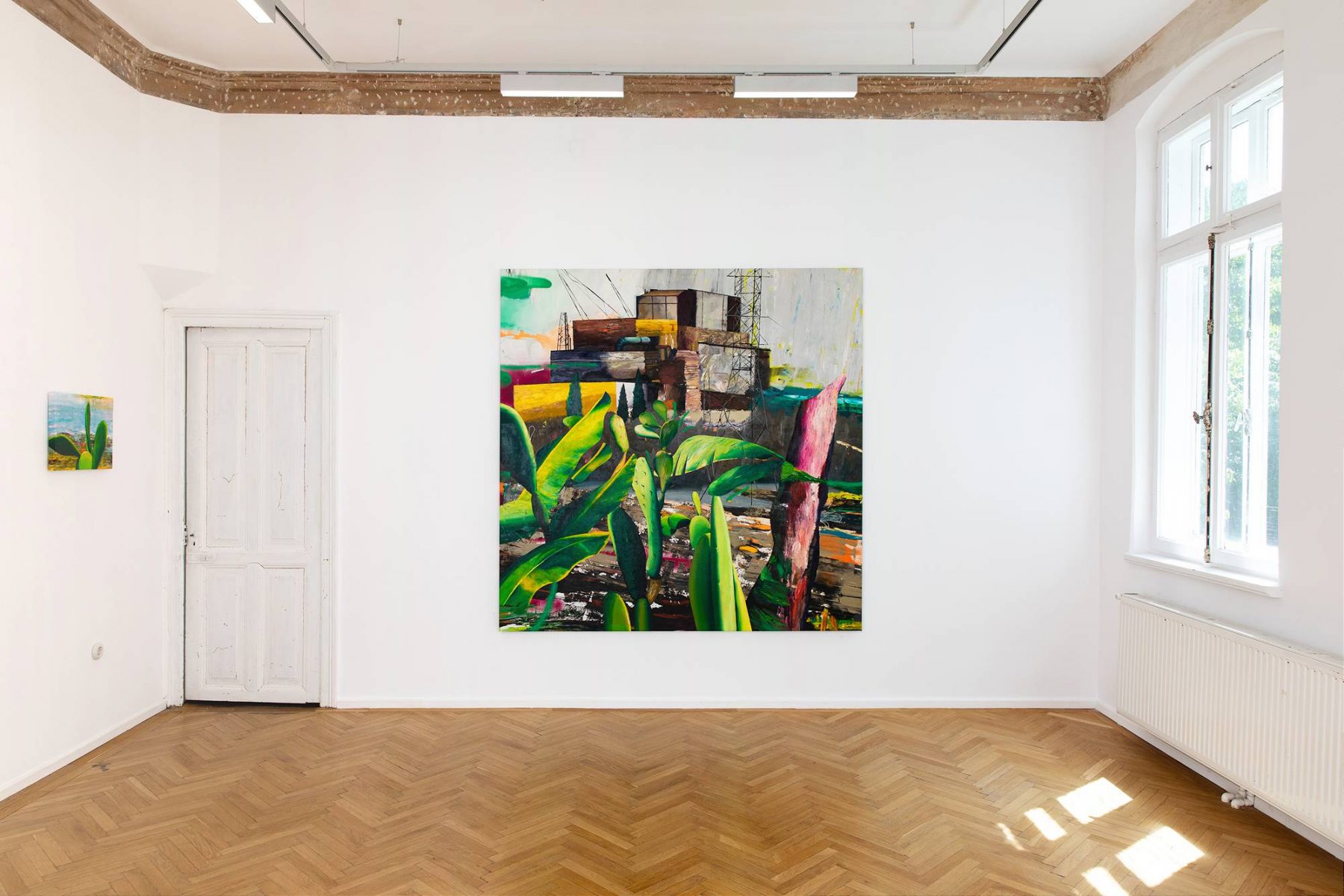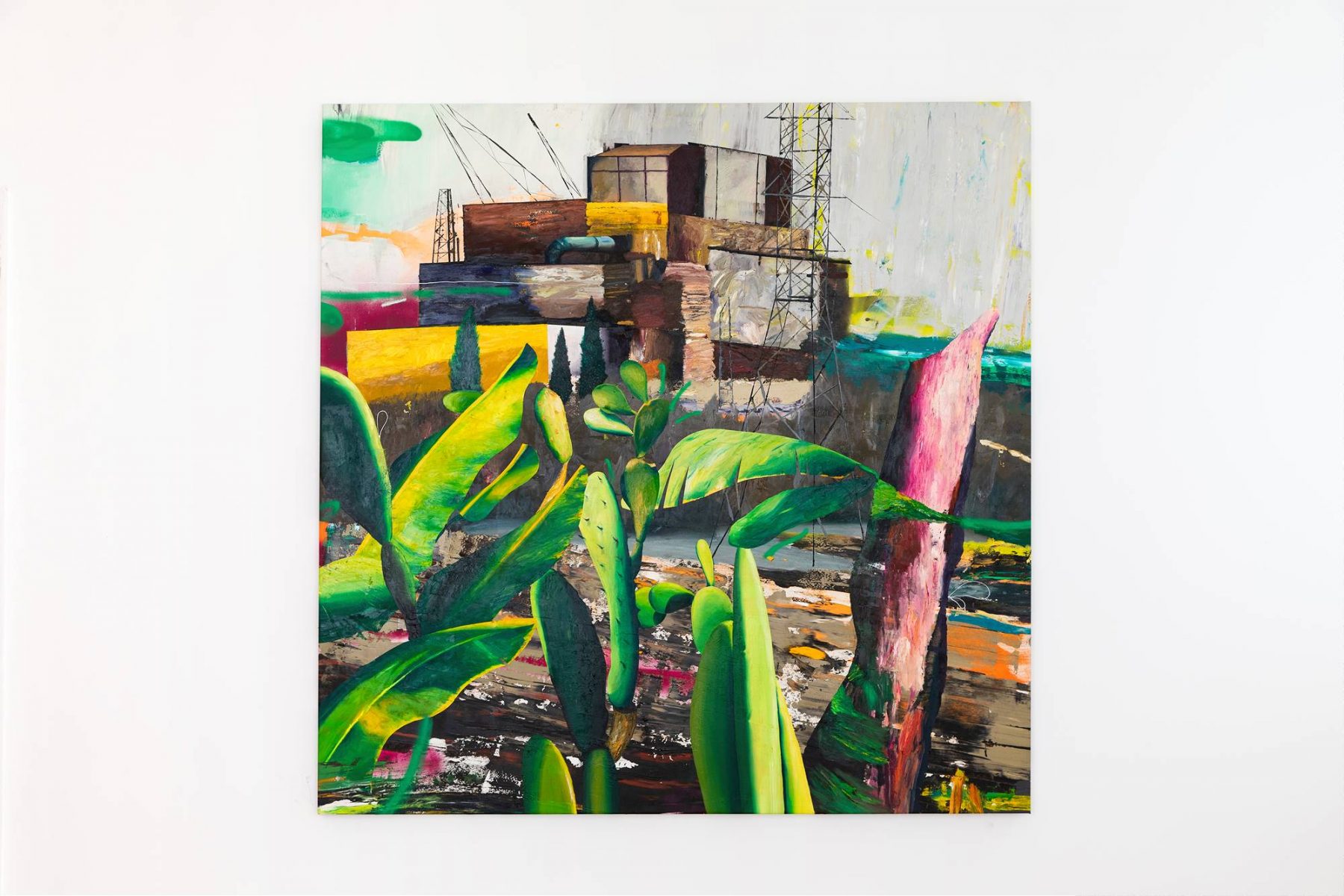Font-Size
Iulian Bisericaru
I prefer the old green
As a painter, my artistic activity continued during the pandemics in the isolation of my studio in Sibiu. If I once used to travel to artistic residencies to Aschersleben Summer Academy in Germany, to Cite International des Artes in Paris, Pantelleria, or Macerata in Italy, I am now secluded to my hometown, surrounded by mountains. It is here that my long-term preoccupation with nature began, on the clash between nature and human habitation, on how architecture and ecological thought can mitigate the tensions created by human intervention. Inspired by American painting, by Edward Hopper, Richard Diebenkorn or David Hockney, but living in an Eastern-European context, my paintings thrive on opposites brought together, fantasist landscapes lush with colour and abstract interventions. Long before the pandemics, I made absence pervasive in my compositions, a loneliness I have never imagined shared with so many people throughout these couple of years.
During my residency at Cite Internationale des Artes in 2019, I have been interested in studying the transformation of residential blocks of flats and their terraces in adapted green urban spaces, as incentivised by local city policies. At the same time, I have become more and more intrigued by the open-air Parisian parks and the resolute ideal of integrating nature (albeit domesticized nature) in day-by-day living. Just one year after my artistic residency, all green spaces in Romania have been closed as a measure of a nation-wide lockdown in the spring of 2020.
The unprecedent measure, has allowed the local authorities to further intervene in these green areas, as in all public spaces vacated by people. Cutting down whole patches of trees, or even transforming some of the green areas in new parking spaces, their modification went unnoticed [1]. Most people were working from home, banned from green spaces or any crowds, including public protests. In a mirror darkly, the sale of exotic-plants as house-plants increased, feeding an industry that has proven toxic to the global environment, intended to feed the very human need to be close to nature [2].
Collaboration with Romain Poirier:
Sound producer and composer, Romain Poirier develops original compositions for documentary and fiction films. In 2014, he co-founded Mer-Noir Studios, allowing him to deepen his research and affirm a free and radical creative process in his way of thinking, composing and producing music. He accompanies artists, directors and musicians through the production of works and performances and develops projects such as the extreme noise band Uzhur or the radio collective Scalarstation.
Co-financed by the National Cultural Fund Administration:
This cultural project is co-financed by the National Cultural Fund Administration, and does not necessarily represent the position of the National Cultural Fund Administration. AFCN is not responsible for the content of the project or how the project results can be used. These are entirely the responsibility of the beneficiary of the funding.
There will be people and they will push the world further.
Radu Vancu, Canto I
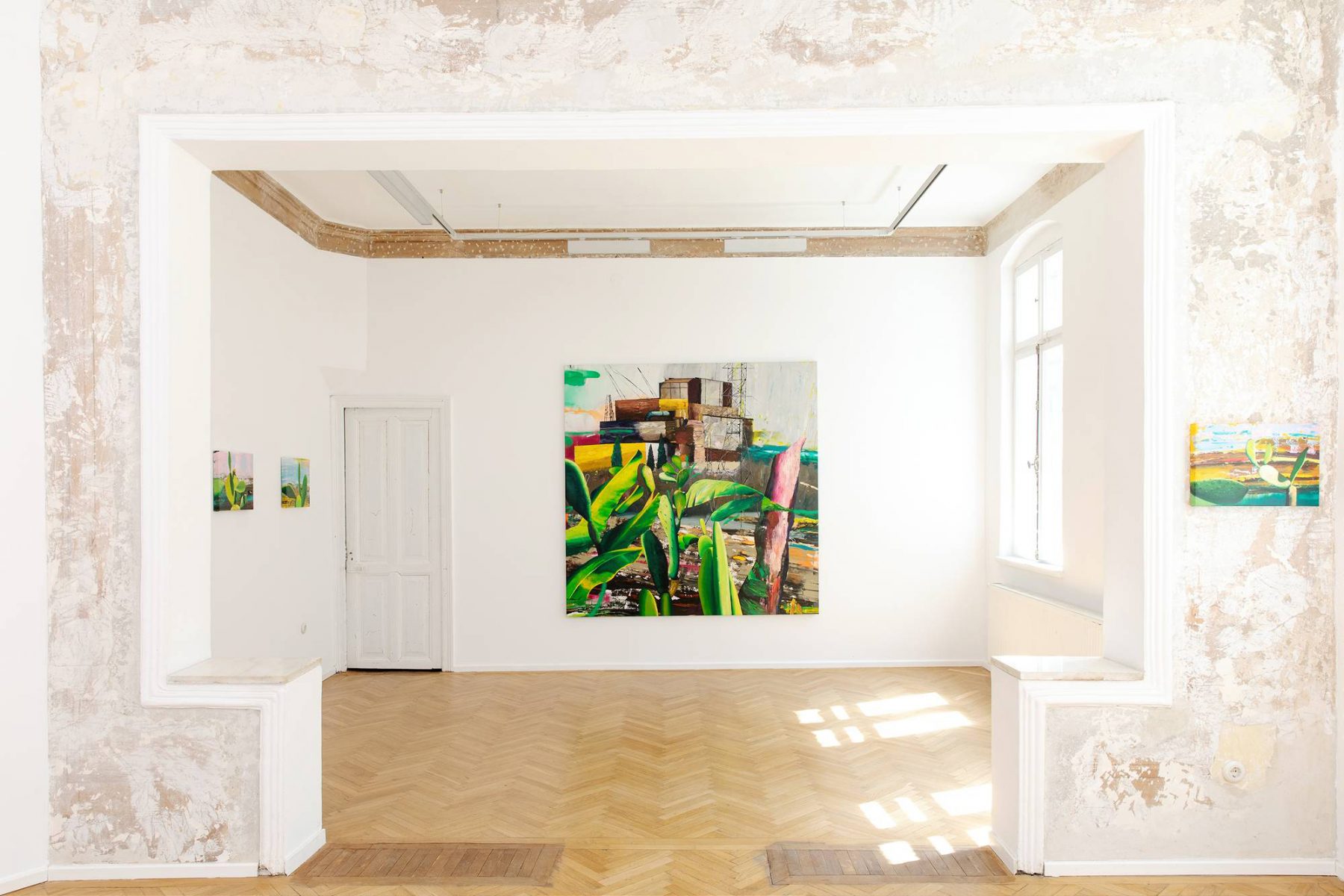
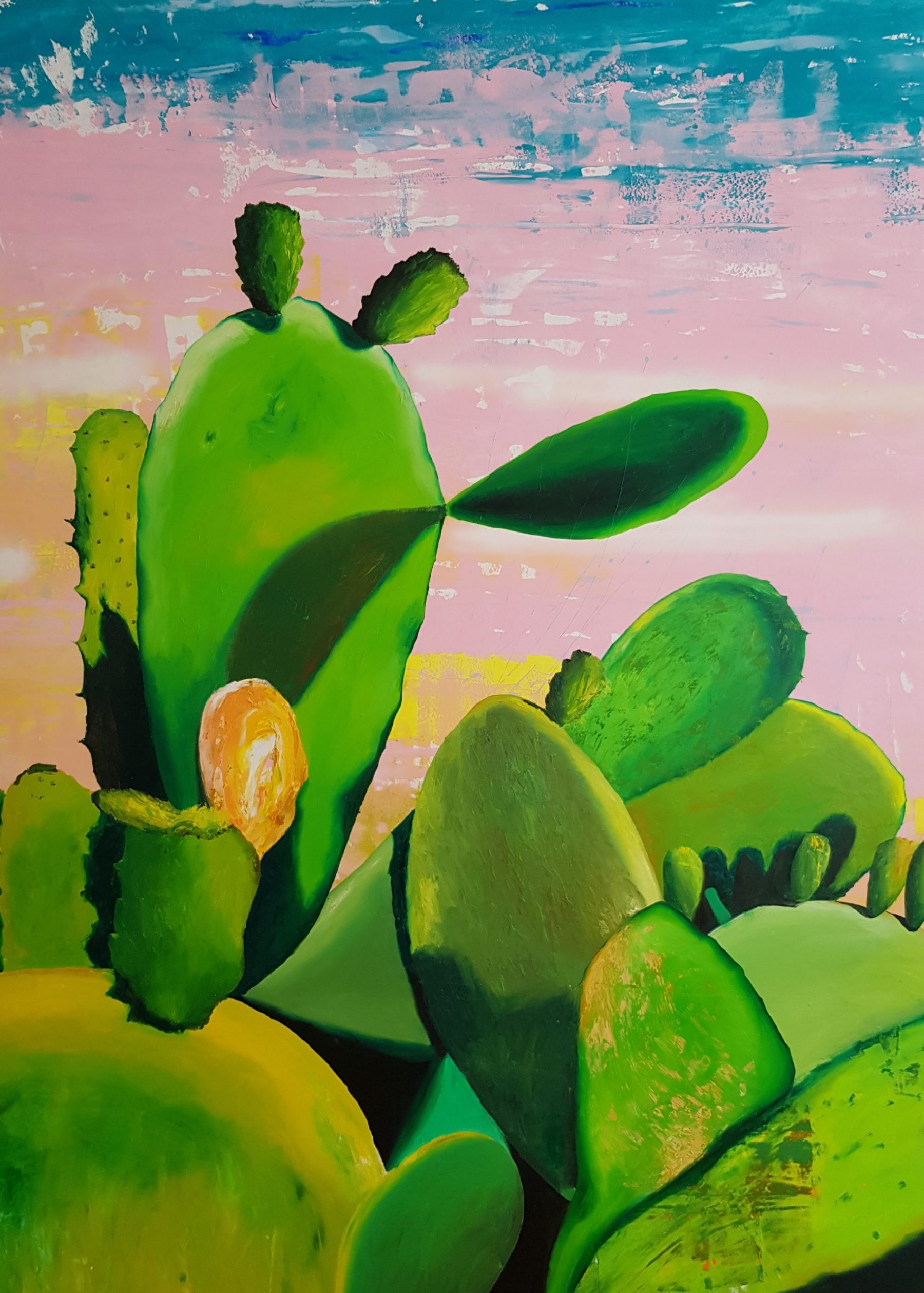
Within the theme of ”Ignorance is Strength? Artistic Expression and Biopower in the Post/Pandemic Age”, I propose an artistic research on the politics of green spaces, both in public urban settings as well as in the domestic spaces. The research would be a continuation of my residency in Paris, working with painting, furthermore proposing the creating of a digital art space in co-production with fellow sound and digital artists.
The premise of the artistic research is that more than any other domesticated-plant spaces, and not exclusively in Western culture, gardens and parks consistently embody the ideal utopian setting for a society. In the attempt of constructing clear notions of human rationality, literature and art have devised representations in which the forest stands as the antithesis of the enlightenment’s ability to extract the secrets of nature under the light of human reason. At the opposite side, the tamed wild nature in the form of parks and gardens, came around at the turn of the 19th century as a result of the rationalization and further annihilation of forests caused by the industrial revolution. At this point, the imperviousness of forests turned into the quintessential site of the romantic sublime [3]. The first parks were preceded by intense public debate. By the mid-nineteenth century, the Industrial Revolution had thoroughly permeated the large cities of Europe and North America, and the living conditions of large swathes of the population, who had migrated from rural areas to the metropolis to work in the factories, were very poor. The vast majority of the inhabitants of these growing cities did not have access to natural areas [4].
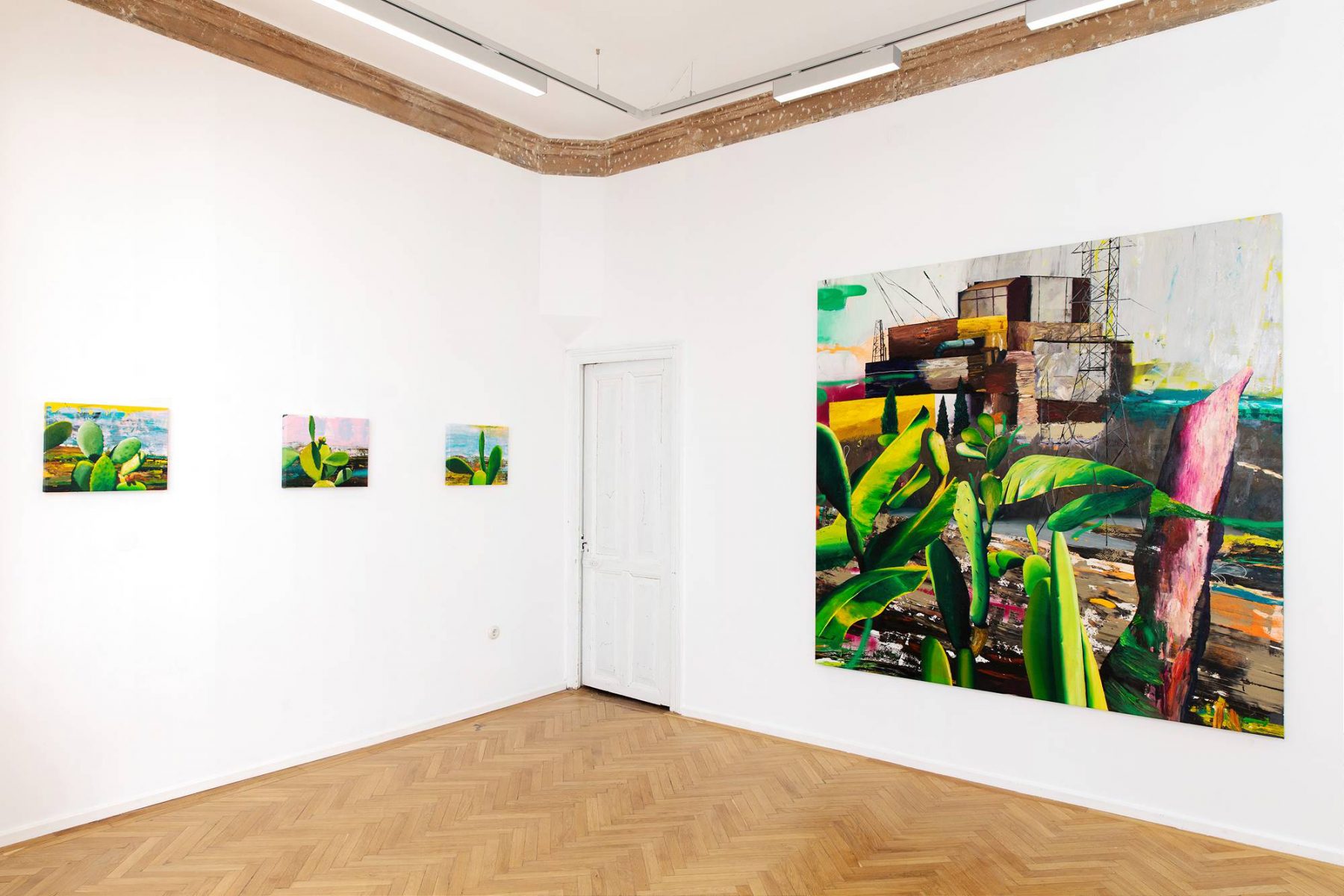
A school of thought known as “social hygiene” appeared against this backdrop. Hygienists publicly denounced the situation that was further aggravated over the years. To address this situation, they sparked a public debate on the living conditions and health of the population and tried to launch wide-ranging initiatives in urban areas. The first, modern, public parks were created in the United Kingdom in the mid-nineteenth century to provide an environment that would mitigate these shortcomings for the vast majority of people, and help improve their physical and mental health [5].
My artistic interest in the language of painting, specifically landscape painting, will be expressed throughout my research from a practical and philosophical point of view. I plan to depict on canvas both urban green spaces in the aftermath of the COVID-19 pandemics, as well as a critical perspective on house-plants and the contemporary associations between plant-life and collective urban living. I will theoretically connect my practice to Foucauldian thought on nature [6], further linking his texts on nature with the idea of biopower and the ability to voice one’s community ideal toward city-living.
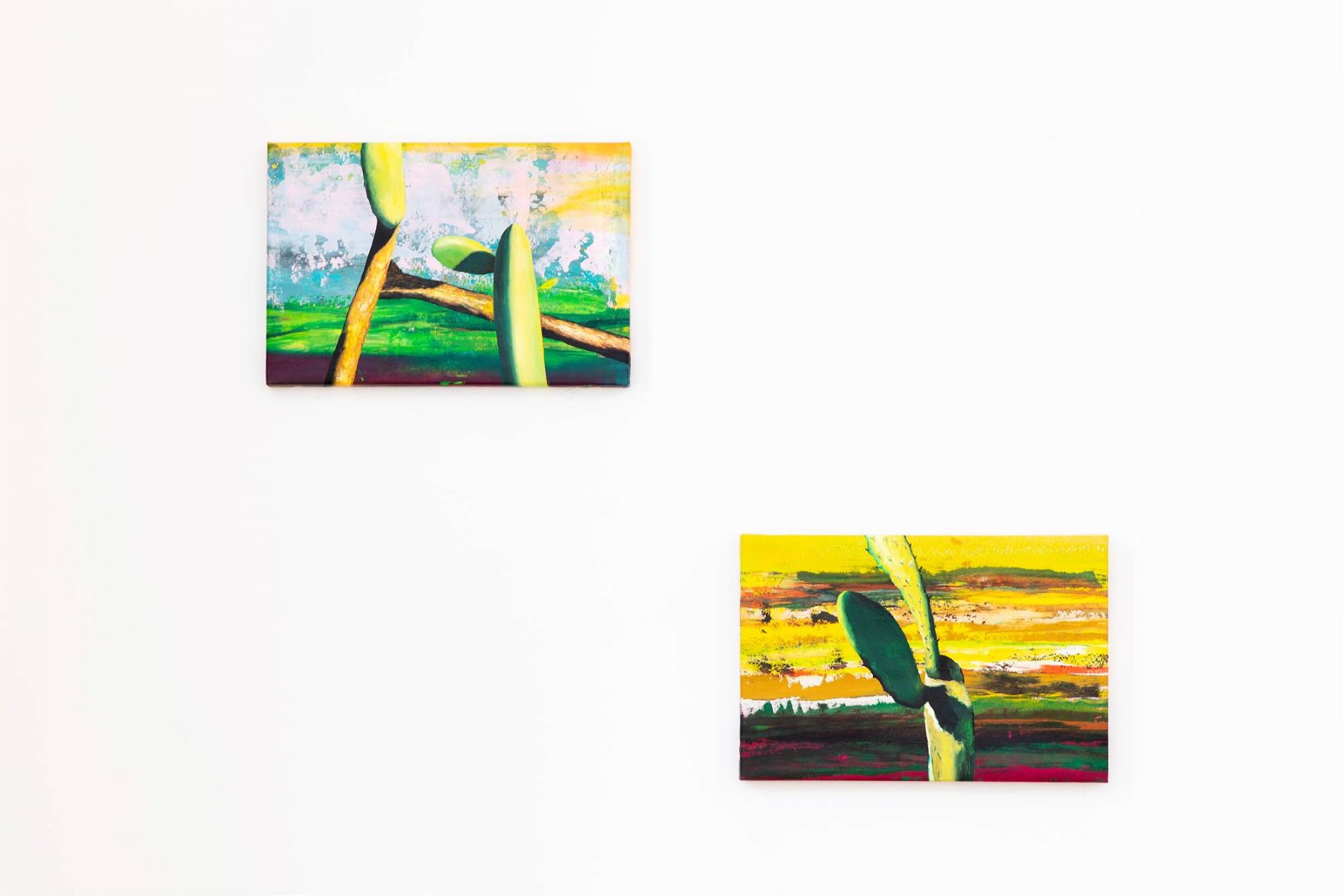
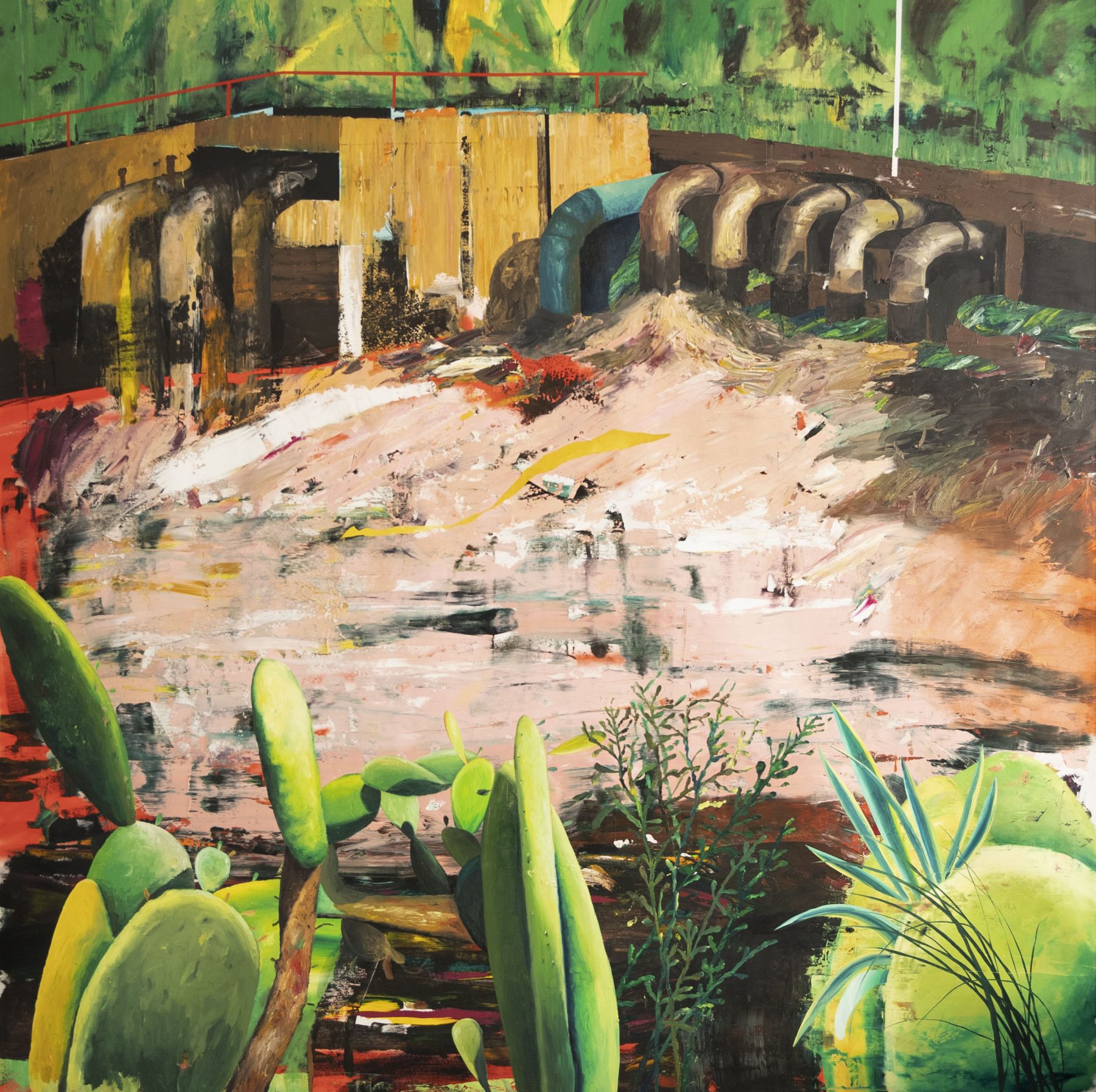
[1] There are many articles in the Romanian press, however none translated to English. Some of the following links could be accessed through Google Translate at the following addresses:
https://www.turnulsfatului.ro/2020/08/03/revolutia-verde-din-cartierul-strand-rdquo-au-scos-castanii-si-au-plantat-asfalt-rdquo-175389, https://alba24.ro/astazi-miting-de-protest-in-parcul-custozza-17963.html, https://timponline.ro/si-copiii-au-protestat-dar-impotriva-taierii-copacilor-din-parc/
[2] A purely-informative press article is warning against the damaging effects of house-plant commerce
https://www.vox.com/22611799/houseplants-environmental-impact-youtube
[3] The collection of essays by Giovanni Aloi, Why Look at Plants? The Botanical Emergence in Contemporary Art, Brill, Leiden & Boston, 2019.
[4] Gothein, M. (2014). A History of Garden Art: From the Earliest Times to the Present Day (Cambridge Library Collection – Botany and Horticulture) (W. Wright, Ed.; L. Archer-Hind, Trans.). Cambridge: Cambridge University Press.
[5] Ibid.
[6] The starting point will be the informative text of Paul Alberts, ” Foucault, Nature, and the Environment” published in Foster, E. (2018). Foucault and Ecology. In L. Downing (Ed.), After Foucault: Culture, Theory, and Criticism in the 21st Century (After Series, pp. 122-138). Cambridge: Cambridge University Press.

